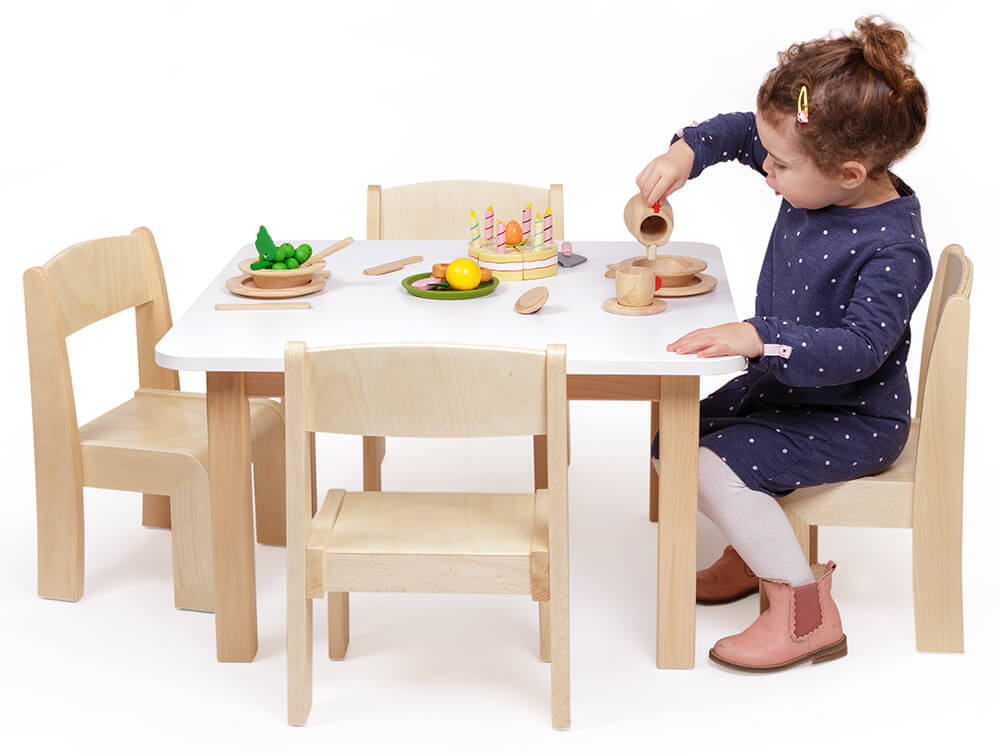Understand what’s essential, consider your space and budget, and tap into suppliers’ expertise, says Sue Harris…
The exciting moment has come, the time to turn an empty space into a nursery. But what are the things to have in mind as you move from preparation and planning to the first children and parents arriving through your doors?
Being clear about the space you have available and a plan of how you want to use it is a very good place to start.
How many rooms do you have? What age group of children will be in them? Will you be caring for babies? Do you have room to have separate dining and changing areas, or will some rooms or some of your space need to be multifunctional?

The essentials for your nursery will be determined by the requirements of Ofsted.
Must-haves will include tables and chairs that match in height. If you are catering for different age groups, you’ll need some furniture at the correct height for each age group. Similarly play kitchens and water and sand trays must be height-appropriate too.
If you are looking after under twos, you will need cots or sleep pods for nap time.
You’ll also need to be able to provide different areas for play, discovery and quiet time out when necessary. These will include a cosy space, areas for messy play, role play, understanding the world and more.

Furniture which is durable, pleasing to look at and provides plenty of storage for resources is usually a good investment, and don’t forget to look out for manufacturer guarantees for extra peace of mind.
Then there are things that will come down to the preferences you and your nursery team have.

If you want children to be able to ‘help themselves’ to resources, which do you prefer? Natural baskets or transparent storage boxes? When it comes to art activities will children sitting at tables or standing at mobile easels be a better solution for you? Do you have space to have your Circle Time rug and cushions in place all of the time, or would you like to be able to store them and arrange them when needed?
A set up or refit is something you may only do a few times, while for nursery and early years suppliers, it’s all part of the regular routine. So take advantage of suppliers’ experience and expertise and don’t be afraid to ask for their assistance and recommendations for your nursery.
You may feel a bit reluctant to discuss the budget you have available, but it will help your suppliers if you let them know the amount you can spend. Self-assembly furniture is often a cost-effective solution and you can always add more furniture in the future if the number of children you are caring for increases.
Multifunctional furniture and units that can help zone your space are incredibly useful – particularly if they also contain storage for the relevant resources.
It also makes sense to select resources that can be used across different areas of learning like STEM, fine motor skills and communication and literacy. Suppliers will be able to help you identify which areas of development different resources cover.

If you already have items that you like, or work well for you, let your supplier know, as it will give them more information to help select other furniture, resources and equipment that will suit you, your team and the children in your nursery.
Keep a cool head, keep smiling and all should be well!

Sue Harris is Nursery Know-how Adviser at Gloucestershire-based Early Years Direct. For more advice and help, visit nurseryknowhow.com or earlyyearsdirect.com
